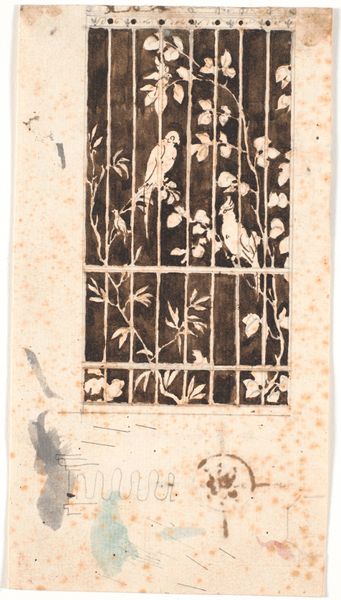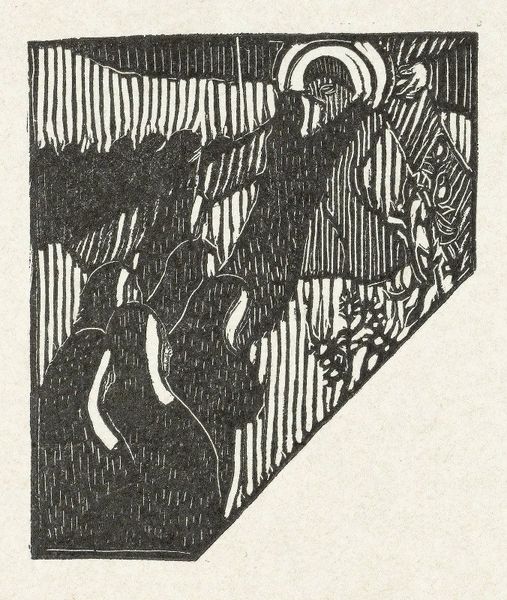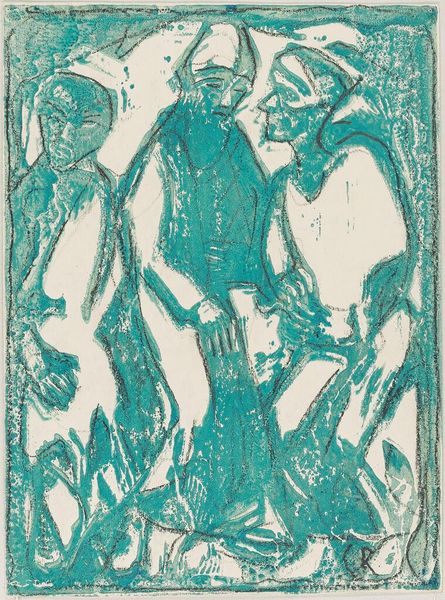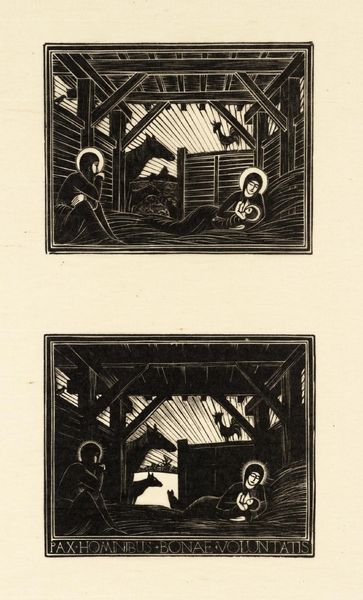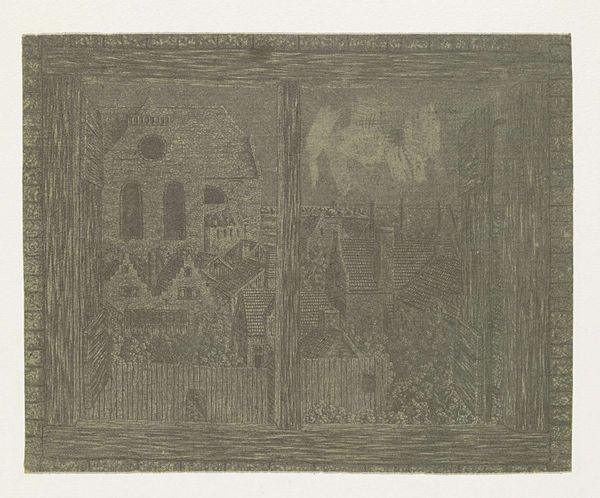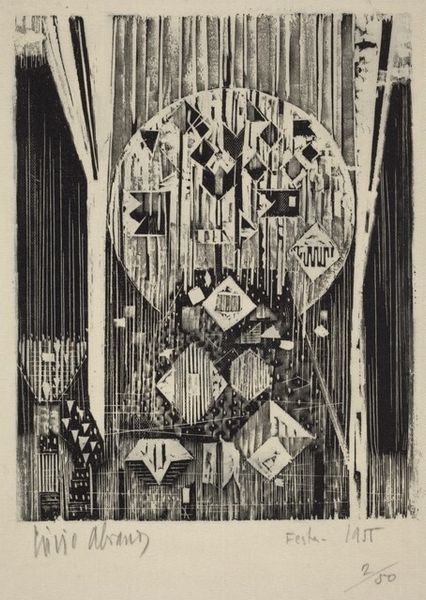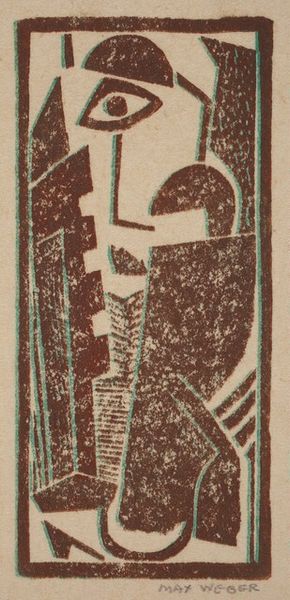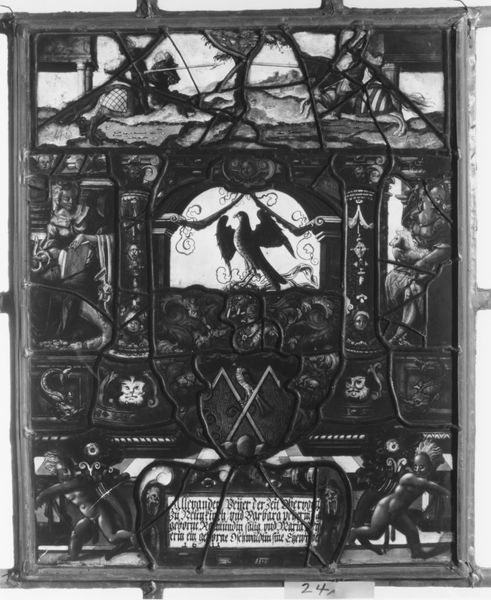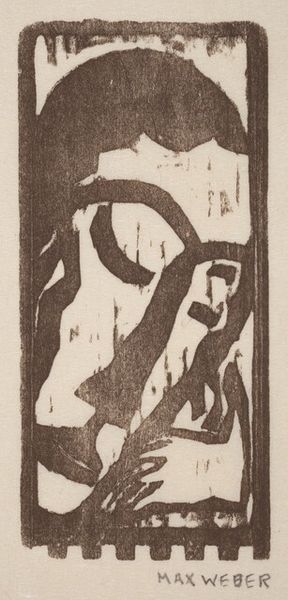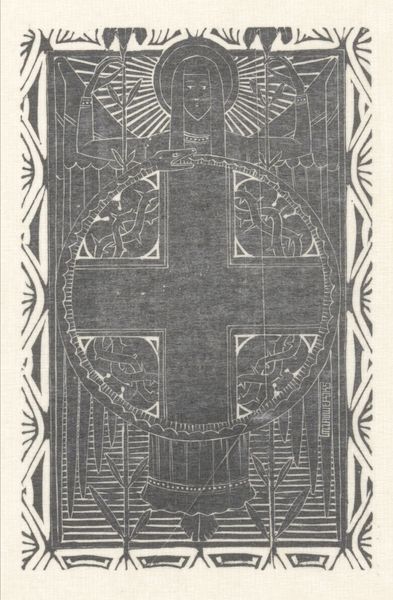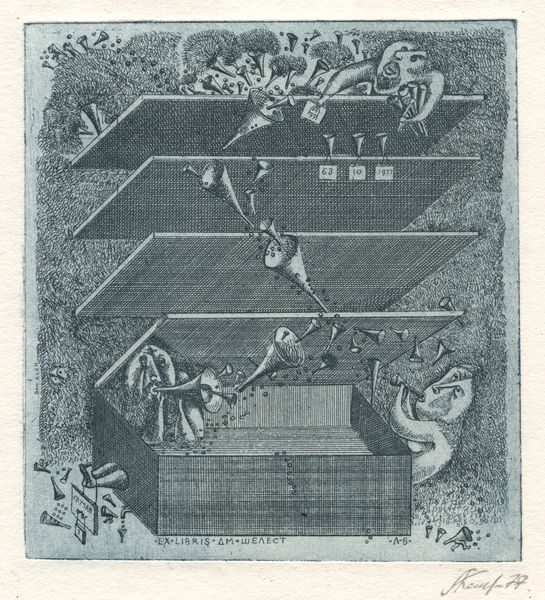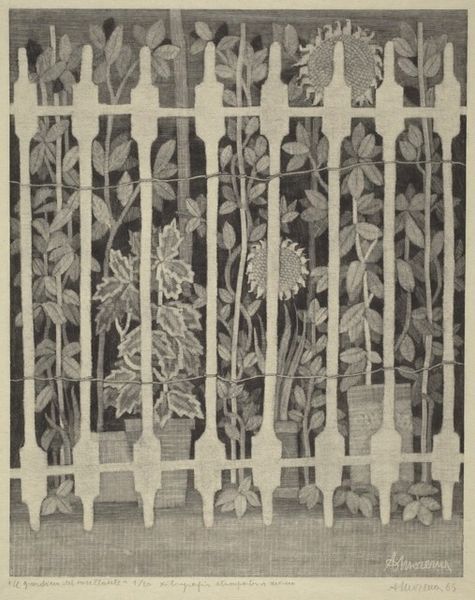
print, engraving
#
art-nouveau
# print
#
landscape
#
figuration
#
linocut print
#
engraving
Copyright: Public domain
Curator: Haralampi Tachev's "Project for a Window," created around 1905, presents us with an intriguing proposition rendered through the medium of printmaking, specifically engraving or perhaps a linocut. What strikes you first about this piece? Editor: Its melancholic and somewhat theatrical atmosphere. The figures seem posed, caught in a tableau vivant viewed through the gridded frame—or are they prisoners? The color reinforces a somber, contemplative mood that permeates the entire scene. Curator: Considering its creation during the Art Nouveau movement, it's interesting to ponder the societal influences that led to such imagery. Notice how the window isn't merely a transparent portal. Its frame—crafted with stylized floral patterns—both confines and ornaments the depicted reality. Editor: Absolutely, I read that constraint and ornamentation as powerful commentary. The artist seems to invite questions about visibility and confinement. Who has the privilege of looking out, and who is perpetually on display? I'm intrigued by what seems like an intermingling of social classes and genders, framed by rigid lines that underscore the lack of social mobility at the time. Curator: Let’s examine the craft involved in making such a piece. A linocut, for example, demands physical labor. The artist is carefully carving away material to create the design, each line representing hours of painstaking work, a departure from the mechanization of industrial printing—could it be a statement on valuing handcrafted processes during mass production? Editor: That’s a crucial observation. By employing manual printmaking techniques amidst rising industrialization, Tachev positions his art as a critique against alienation resulting from industrial progress. The deliberate, handcrafted nature elevates the labor and acknowledges art's social responsibility. And the art itself is clearly alluding to a mythologized past or, more likely, longing for a history that can be harnessed to critique the present. Curator: It certainly provides a unique insight into early 20th-century anxieties surrounding modernization, class struggle, and the changing landscape of artistic production. Editor: Indeed, and through Tachev’s window, we glimpse a moment suspended—a prompt, challenging viewers to confront complex realities regarding power, and perspective, then and now.
Comments
No comments
Be the first to comment and join the conversation on the ultimate creative platform.
